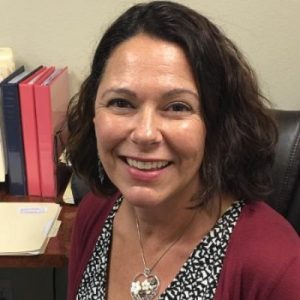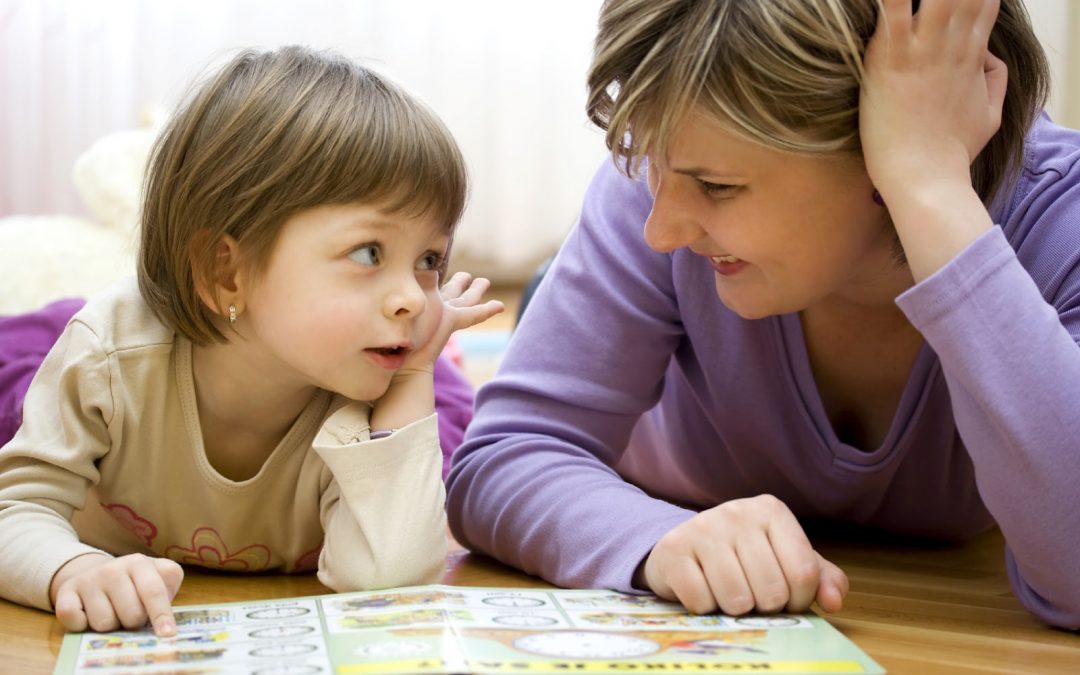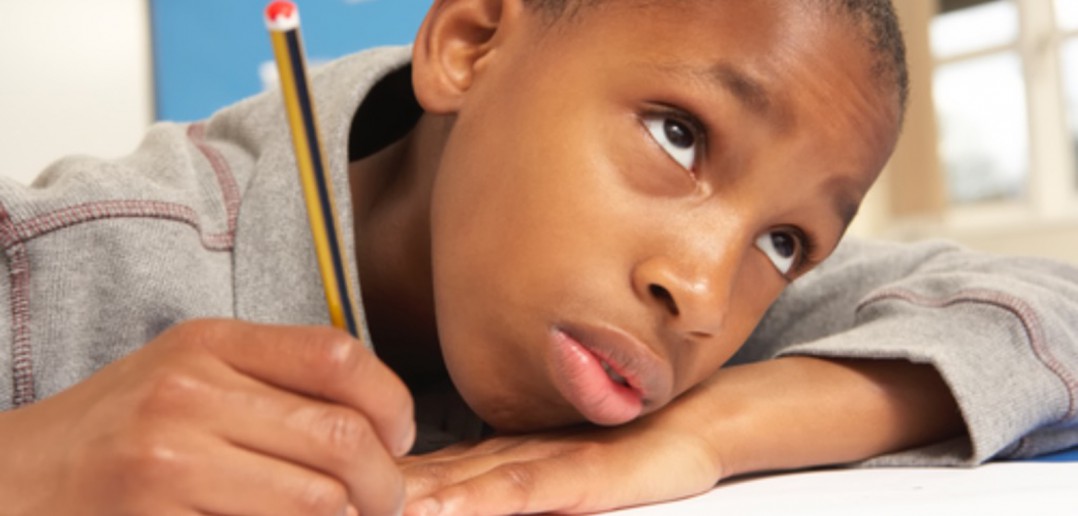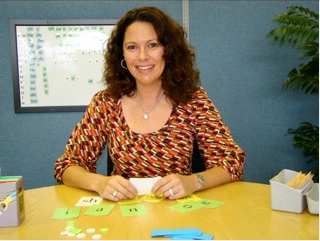
by PRIDE Reading Program Admin | Mar 12, 2017 | A PRIDE Post, ADHD
Following directions is one of the most difficult tasks for a child with ADHD to master. Children with ADHD are easily distracted and have a tendency to get sidetracked a lot. With a lot of patience and support, you can help your ADHD child learn to follow directions using these very simple tips and strategies.
1. Organize and simplify the directions:
Keep the directions as simply stated as possible so that your child with ADHD can remember them easily and not get lost in your words. Make the most important information stand out. “Sara, I want you to get your jacket, get your backpack and put on your shoes, then come back here to me. Got that? Jacket, backpack, shoes. Go!”
2. Use multisensory strategies to help the memory:
You can sing and dance the directions with your ADHD child. “jacket, backpack, shoes, yee-hah!” You can have your child clap his hands or tap the table for each step he needs to do.
3. Teach your child to repeat the directions:
Have your child repeat each direction a few times. “get out a piece of paper, a pencil and write my name at the top of the paper. Paper, pencil, name. Paper, pencil, name.”
4. Make charts for procedures or routines that are repeated:
This is especially helpful for organizing and keeping a routine. For example if you have a list of items that need to be done each day before school you can create a checklist.
1. _____ make my bed.
2. _____ put dirty clothes in the hamper.
3. _____ feed the dog.
As your child completes a step, he/she can check that step off the list. This will give your child some direction and keep the attention on the task at hand.
5. Be supportive and stay positive!
Nagging your ADHD child is not going to assist them in learning strategies and skills to follow directions. You can provide support for your child by:
- prompting your child for listening skills. “I am going to give you the directions, I would like you to please look at me so I know you are listening.”
- asking your child how you can provide a reminder for them without nagging them. They might suggest a hand gesture or a tap on the wall, a wink of the eye, etc.
- offering understanding when your child feels frustration. ” I understand it is hard to keep track of doing so much at once. Would you like me to help you put together a list that we could start checking off after each step?”
- praising your ADHD child often. If they don’t complete the task praise them for making an effort. If your child fails to complete a task, encourage her/him to try to get it finished. Use positive encouragement.
Learn more about the New PRIDE Reading Program
_________________________________________________________________________________________________

Karina Richland, M.A. is the owner of PRIDE Learning Centers, located in Southern California. Ms. Richland is a reading and learning disability specialist. Ms. Richland speaks frequently to parents, teachers, and professionals on learning differences, and writes for several journals and publications. You can visit the PRIDE Learning Center website at: www.pridelearningcenter.com

by PRIDE Reading Program Admin | Mar 5, 2017 | A PRIDE Post, Reading Disability
Many students require extra help in reading. When evaluating remedial reading programs for your child, be aware that not all programs are effective and many can be a waste of time. I made a list of 5 important questions to ask before enrolling your child in this extra reading help.
1. Will the reading help my child receives be provided by a trained teacher, paraprofessional or a parent volunteer?
In many schools parents are trained to work as parent volunteers and aids to help the students who are struggling. If your child has been diagnosed with a learning disability, or you suspect a more severe issue than the school is acknowledging, then you will probably want to decline any reading help that is not from a highly trained reading therapist or reading specialist. A child with true learning difficulties will need instruction delivered by an experienced expert using an effective method for sufficient time for the child to catch up to grade level.
2. What specific reading help will my child be receiving?
A child with a reading disability will need a multisensory, systematic, very structured and cumulative reading program with direct and explicit instruction in phonemic awareness and followed by synthetic and analytic phonics with lots of repetition and practice. It will need to integrate the teaching of listening, speaking, reading, spelling, vocabulary, fluency, handwriting, and written expression. Also, remedial programs differ from “mainstream” programs in the extent to which phonology and language structure are explicitly taught. For best results, avoid reading help that teaches your child the material in the same way he or she was taught the first time around. That didn’t work. Also avoid programs that allow too many kids in the group. The idea is that your child needs more individualized attention.
3. What kind of training in this reading help does the teacher delivering the instructions have?
Although the choice of reading program is important, the expertise and training of the teacher are even more critical. Attendance at a 2 day workshop is probably enough to gain an overview of an approach, but to be truly competent at using this approach, a teacher or therapist should have completed at least 20 – 30 hours of training as well as plenty of experience teaching the program.
4. What will my child miss in the classroom while he gets this reading help?
Being pulled out of class can be challenging for students, especially in the middle school years, since they might have to make up material that they miss in class and might receive lower grades in subjects in which they normally do well.
5. Can I come and watch a session?
Check out the teacher, the program and the other students. See if this is the right fit for your child and if the reading help is working and delivering results.
Learn more about the New PRIDE Reading Program
___________________________________________________________________________________________________________________________________

Karina Richland, M.A. is the Founder and Director of PRIDE Learning Centers, located in Southern California. Ms. Richland is a certified reading and learning disability specialist. Ms. Richland speaks frequently to parents, teachers, and professionals on learning differences, and writes for several journals and publications. You can visit the PRIDE Learning Center website at: www.pridelearningcenter.com

by PRIDE Reading Program Admin | Feb 17, 2017 | A PRIDE Post, Phonological Awareness
Learning to read is a gradual and sequential process that is developed with explicit instruction and exposure. In the late preschool years, children begin the reading process by listening to stories and chanting nursery rhymes so that they can hear the similarities and differences in the sounds of words. Through this process, the children begin to manipulate and understand sounds in spoken language and proceed by taking the next step of making up rhymes and words on their own.
As the children get older, they begin to learn the names of the letters in the alphabet and the different sounds each letter represents. Subsequently, they begin to write the letters and numbers that they already recognize by their shapes. Finally, the children associate the letters of the alphabet with the sounds of the words they use when they speak. At this point, they are on their way to learning to read!
The key to the entire reading process is phonological awareness. This is where a child identifies the different sounds that make words and associates these sounds with written words. A child cannot learn to read without this skill. In order to learn to read, children must be aware of phonemes. A phoneme is the smallest functional unit of sound. For example, the word ‘bench’ contains 4 different phonemes. They are ‘b’ ‘e’ ‘n’ and ‘ch.’
Some examples of phonological awareness tasks include:
1. Identifying rhymes – “Tell me all of the words you know that rhyme with the word BAT.”
2. Segmenting words into smaller units, such as syllables and sounds, by counting them. “How many sounds do you hear in the word CAKE?”
3. Blending separated sounds into words – “What word would we have if we blended these sounds together: /h/ /a/ /t/?”
4. Manipulating sounds in words by adding, deleting or substituting – “In the word LAND, change the /L/ to /B/.” “What word is left if you take the /H/ away from the word HAT?”
Through phonological awareness, children learn to associate sounds and create links to word recognition and decoding skills necessary for reading. Research clearly shows that phoneme awareness performance is a strong predictor of long- term reading and spelling success. In fact, according to the International Reading Association, phonemic awareness abilities in kindergarten (or in that age range) appear to be the best single predictor of successful reading acquisition.
Learn more about the New PRIDE Reading Program
_________________________________________________________________________________________________
Karina Richland is the Founder and Director of Pride Learning Centers, located in Los Angeles and Orange County. Ms. Richland is a certified reading and learning disability specialist. Ms. Richland speaks frequently to parents, teachers, and professionals on learning differences, and writes for several journals and publications. You can visit the PRIDE Learning Center website at: www.pridelearningcenter.com

by PRIDE Reading Program Admin | Jan 26, 2017 | A PRIDE Post, Auditory Processing Disorder
Children with auditory processing disorder will often struggle in a classroom setting, especially in the areas of following directions, reading, spelling, writing and comprehension. Auditory processing disorder results in a child mis-hearing, mis-pronouncing, and mis-repeating information. These children often have difficulty hearing the difference between sounds or words that are similar (coat/boat or sh/ch/. If you can’t hear the sounds properly, you can’t say the sounds properly you will also not read or write the sounds properly.
Here are some strategies for teachers and other professionals that work with children diagnosed with an auditory processing disorder in the classroom:
- Sit the child as close to the teacher as possible. Most children with auditory processing disorder will have difficulties hearing among other noises. If the child is sitting towards the back of the class he will only hear the sounds surrounding him – not the teacher’s voice. Therefore, just by moving the child nearer to the sound, at the front of the class will make a huge difference.
- Have the child look at the speaker. The child with auditory processing disorder needs to see the face and mouth of the speaker. Give the child as much eye contact as possible.
- Encourage all participants in the classroom to project their voices clearly. So many children have soft voices. When the teacher is asking questions and calling on students, the teacher can repeat the answer of the quieter voiced children so that everyone is able to hear and understand the answer. Not being able to hear is a lost opportunity for learning!
- Implement lots of visual images. Using visual stimuli when explaining will give the child with auditory discrimination problems lots of clues. These can include charts, pictures or illustrations. Teachers can use their own body language to serve as a visual. This could be hand movements or facial expressions. Think of ESL teachers and how they utilize TPR (total physical response).
- Praise the child often for being a good listener!
_______________________________________________________________________
Karina Richland is the Founder and Director of Pride Learning Centers, located in Los Angeles and Orange County. Ms. Richland is a certified reading and learning disability specialist. Ms. Richland speaks frequently to parents, teachers, and professionals on learning differences, and writes for several journals and publications. You can reach her by email at karina@pridelearningcenter.com or visit the Pride Learning Center website at: www.pridelearningcenter.com

by PRIDE Reading Program Admin | Jan 9, 2017 | News & Events
Happy New Year! I hope that everyone had an amazing winter break with a lot of relaxation and rest. I am feeling rested and excited to get back to work at PRIDE. I love this company so much and I love working in it and on it every single day. In this January issue of our newsletter I want to share the story of PRIDE and how it all began…
Many of you know that both my children are in Special Education. My son was diagnosed with dyslexia and ADHD at age 5 and my daughter, who was born 2 months premature, was equally diagnosed with dyslexia and ADHD at age 4.
I was a 2nd grade teacher by profession and an avid reader myself. I would read and read to my son in Kindergarten and First Grade and try to teach him the letters and sounds, just like I had been taught to do in all of my teaching credential coursework and school district core literature training. He just wasn’t getting it. I would have conferences with his classroom teacher, and she would say, “he is just immature, he will get it sooner or later.” I wasn’t convinced. So, I had him tested and I learned that mother’s intuition is always right. Sure enough, he has a learning disability and was eligible for special services at school starting in 2nd grade.
The services began. He would get pulled out of class and go to a Resource Classroom and receive reading help. The school assured me that he was getting the right help and was in the right place. After a year of this, he still couldn’t read. These programs obviously weren’t the answer to his problems and I was starting to get frustrated and discouraged with the school’s intervention program. I was getting desperate for help and I did not know how or where to find it. It was consuming all of my time. I began to investigate and research reading programs determined to figure out how to help my child, I just wasn’t trusting the school anymore to help him.
During this time, I came across the Orton-Gillingham method. I was fascinated by this program and decided to become certified in it and practice it with my son. Being a teacher myself, I caught on quickly and I was highly motivated to master it. I soon found out that it was the answer to my son’s reading struggles. He started reading. I finally figured it out.
The Orton-Gillingham is a very structured, sequential, cumulative and step by step program. It has a very unique scope and sequence meant for children with dyslexia and reading disabilities. It is multisensory, meaning the children need to use their eyes, ears, voice and hands to read. I became extremely involved with the Orton-Gillingham and active in many learning disability organizations worldwide.
When I first began PRIDE Learning Center, I started out as the only teacher in a small space with a handful of students. As the years evolved, PRIDE Learning Center has gone from 1 teacher (me) to now having over 125 teachers all over Southern California that we hire, train and manage!
In 2015 we decided to try our first on-site summer reading camp in Yorba Linda, California. The students came to the reading camp for 4-6 weeks from 9:00 – 12:00 Monday – Friday. We rented a space from a Chabad Jewish Center in Yorba Linda. It was a huge success and this summer we will be running 14 summer reading camps using the same model as we did in Yorba Linda, renting spaces from local churches, temples and schools.
Over the past 12 years I have worked hard and made relationships with psychologists, psychiatrists, developmental pediatricians, neurologists, speech and language therapists and other professionals who help kids everyday in our communities. I have worked with teachers and staff members of many public and private and special needs schools throughout Southern California.
The success of PRIDE Learning Centers has been in large part due to our ability to attract and maintain a dedicated staff of qualified teachers and who are using what I consider, the perfect reading program. Our teachers have credentials and Master’s Degrees in Special Education, Literacy, Linguistics, Reading, Psychology and undergo extensive training at PRIDE Learning Center in the Orton-Gillingham methodology. They are supported with weekly mentoring sessions and ongoing training so that we can provide our students with the very best learning experiences possible.
PRIDE Learning Center continues to grow and respond to the needs of the Southern California communities. I am so proud of the success of this company and what all the PRIDE Learning Center teachers have accomplished in the past years.
This January, 2017 we turn 12 years old! Thank you to all of our wonderful staff, students, parents and professionals who have made these past 12 years an amazing experience. And most importantly, Thank you Orton-Gillingham! Without you, my son wouldn’t be on his way to college right now to become a teacher. Yes, you read that correctly, a teacher.
Thank you all for your ongoing support.
Karina Richland, M.A.
Founder
PRIDE Learning Centers
Page 4 of 18« First«...23456...10...»Last » 





